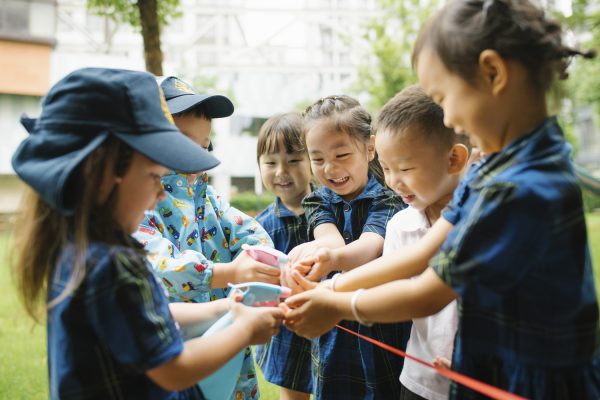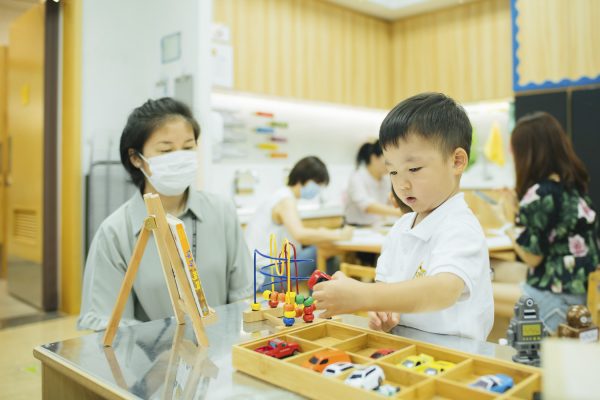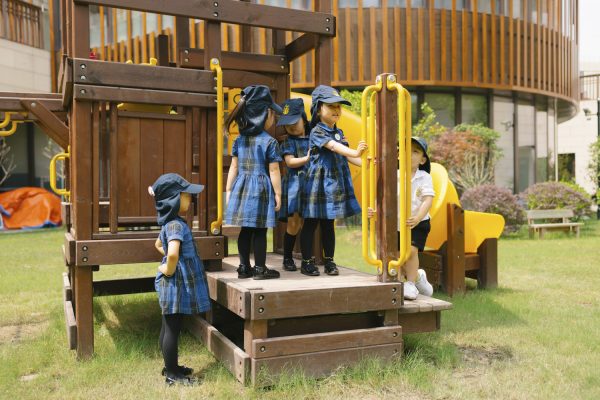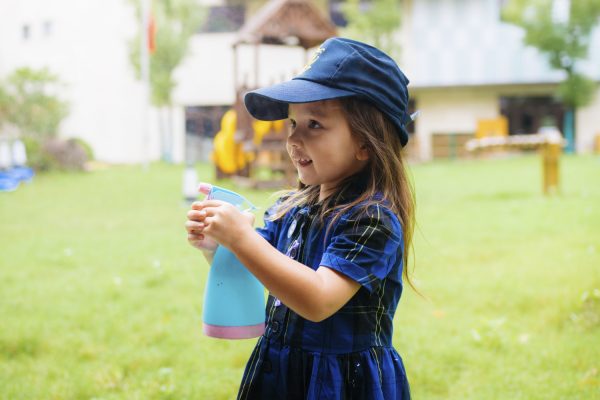
A child’s wellbeing and involvement are two vital components of learning, development and progress in young children. Those who display high levels of wellbeing and involvement are more fulfilled, curious and amenable to deep learning. Understanding them is essential to truly knowing our pupils and gauging their needs.

One of the key tools we use for measuring wellbeing and involvement in our pupils is the Leuven Scale. Developed at Leuven University by the pioneering experimental educationalist Ferre Laevers, it ranges from one (extremely low) to five (extremely high). According to Laevers, children in a high state of wellbeing are like fish in water. They are comfortable in their environment, confident and eager to experiment and explore. Whereas, children with low levels of wellbeing often appear frightened, anxious and dependent, impeding their ability to sustainably learn and explore their potential. Similarly, high levels of involvement characterised by curiosity, fascination, deep satisfaction and a genuine interest in what they are doing, are indicators of deeper learning. These indicators are also directly linked to the characteristics of effective learning, which form part of our educational philosophy and are promoted throughout the different pedagogical approaches at each stage of a pupil’s learning journey. 
Measuring a child’s wellbeing provides a starting point for further evaluation and planning. Concentrating on pupils with lower levels of wellbeing and/or involvement enables us to examine the quality and suitability of our work. It provides us with a framework for intervention to support individual pupils. It can also empower and energise us as practitioners. If we see that our efforts are leading to a high level of wellbeing and involvement in our pupils, it creates a positive feedback loop of continual improvement in our pupils’ development and our teaching methods.

At Huili Nursery, we have four key points in the year when we measure the children’s wellbeing and involvement: baseline, end of term one, end of term two and end of term three. These are not the only times that we examine our pupils, of course. If a child scores low, we will re-screen them throughout the term. Wellbeing and involvement scores can help narrate the data around pupil progress and attainment and are therefore useful in creating a holistic picture of each child. Using the Leuven Scale, we look at each pupil and consider how they conduct themselves in a range of situations. For instance, we pay attention to how they separate from their parents each morning, what relationships they have made in class or their level of involvement when engaging in a self-chosen activity. 
If a child has been identified as having a low wellbeing and/or involvement score, our first course of action is to arrange a meeting with parents to discuss what we have observed and address our concerns. Parents can often help us to understand the problem in a wider context as well. We will work together on interventions to support the child and help increase their levels of wellbeing and/or involvement. We will then put a plan into place that supports the child both at home and in the nursery. The Leuven Scale not only enables us to help children reach their potential, it compels us as practitioners to be self-reflective. We can use the scales to review and rethink our learning spaces, whether they are our classrooms, shared spaces, terraces or the various outdoor spaces.

Dr. Ferre Laevers’ words are particularly illuminating: “Enhancing children’s wellbeing has nothing in common with ‘spoiling’ children, giving in or permissiveness. The child has an active role to play in satisfying his/her basic needs. The role of professionals is to offer the necessary emotional support and conditions for the child to learn and to interact successfully with his/her environment, people, places and objects. We know that experiences of true wellbeing do not weaken individuals but make them stronger: they empower and have a positive impact on the person’s self-image and self-esteem.”

We look forward to running more wellbeing and involvement workshops that parents can attend. If you have any questions about wellbeing and involvement, do not hesitate to speak with your child’s teaching partners.